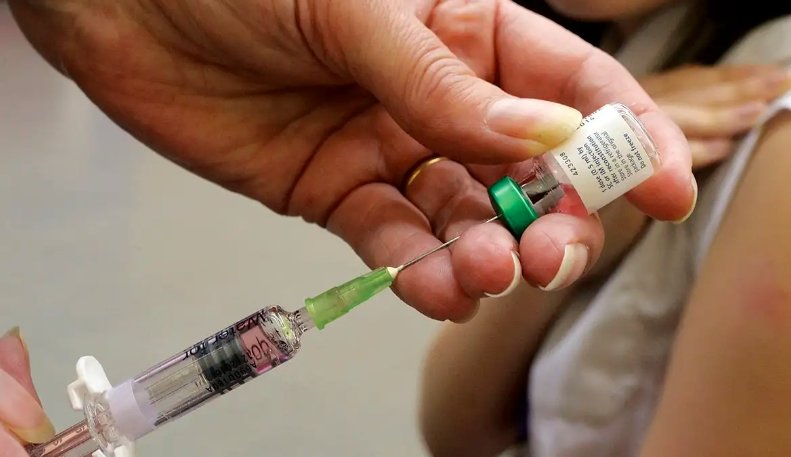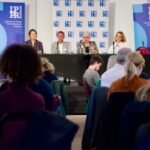Scotland’s first full year of ethnicity-based childhood vaccination data has revealed troubling gaps in uptake—especially among African, Caribbean, and some Asian communities. Health officials say the consequences could be deadly if the trend continues.
The figures from Public Health Scotland (PHS), released alongside broader vaccination updates, show that children from several ethnic minority groups are significantly less likely to receive full protection against diseases like measles, HPV, flu, and Covid-19. The disparities are prompting urgent calls for action.
Startling Drop-Off After First Dose
Scotland’s MMR (Measles, Mumps, Rubella) programme remains one of the most critical public health defences, but even that is falling short for many children.
While the national average for receiving the first MMR dose by age two hovers just below the WHO target of 95%, a worrying pattern has emerged: children from ethnic minority backgrounds are not catching up with the second dose.
In particular:
-
Just 75% of children of African descent had received their second dose by age five.
-
Caribbean and Black heritage groups had 83.8% uptake.
-
Asian ethnic groups reported 87.3%.
For context, herd immunity against measles typically requires at least 95% coverage with both doses.
One sentence here, just to let it breathe.
Health professionals warn this drop-off could open the door to more outbreaks. And with measles cases on the rise across Scotland this year, it’s not a hypothetical risk anymore.

Childhood Vaccines Not the Only Concern
MMR isn’t alone. Other vaccines tell a similar story—and the pattern spans multiple communities and multiple years.
Public Health Scotland’s recent flu vaccine data highlights the disparity sharply:
-
55.2% of White Scottish adults received the jab.
-
Only 36.2% of Arab individuals did.
-
34.4% of Pakistani adults got vaccinated.
-
Just 22.6% of Caribbean adults rolled up their sleeves.
The HPV vaccine, crucial for preventing certain cancers, follows the same trend. And Covid-19? While early campaigns were broadly successful, uptake slowed more dramatically among some ethnic groups once the booster phase began.
These aren’t small differences—they’re consistent, across diseases, across programmes.
So What’s Driving the Hesitancy?
There’s no single answer. But public health officials and community leaders say a mix of trust issues, language barriers, and cultural misunderstandings is likely fueling the divide.
One-sentence paragraph again.
Some families have religious concerns. Others may face difficulty navigating NHS communications that aren’t always translated or accessible. There’s also the basic challenge of logistics—working multiple jobs, lack of transport, and childcare responsibilities can all make scheduling a vaccine appointment harder than it sounds.
Then there’s history. For some communities, long-standing mistrust in government-led health programmes has deep roots, sometimes tied to past abuses or feeling overlooked by mainstream healthcare.
“People need to see faces they trust,” said one Glasgow-based community health worker. “It’s not just about leaflets. It’s about who delivers the message, and how it’s received.”
PHS Responds with New Strategies
Public Health Scotland isn’t ignoring the warning signs.
In response to the data, PHS has started offering MMR “status checks” in secondary schools. The idea is to catch older children who missed their second dose—and give them another chance to be protected.
There are also plans to better integrate vaccine messaging into schools, community centres, and even faith-based spaces.
A quick table to highlight strategies being used:
| Intervention | Description |
|---|---|
| School MMR Checks | Verify vaccine status in secondary schools and offer catch-up doses |
| Community Clinics | Hosting weekend or pop-up vaccine clinics in local neighbourhoods |
| Translated Materials | Offering guidance in Urdu, Arabic, Punjabi, and other languages |
| Faith Leader Engagement | Collaborating with mosques, churches, and temples to build trust |
| Social Media Outreach | Using trusted influencers from minority groups to promote uptake |
This multi-pronged approach is already showing small signs of improvement—but officials caution there’s a long road ahead.
Tragedy Sparks Urgency
The issue took on new emotional weight earlier this month when a child in Liverpool died from measles complications. While the child wasn’t in Scotland, the tragedy has rattled healthcare workers across the UK.
“We can’t afford to wait for an outbreak before acting,” said one Edinburgh GP. “We need proactive systems, not reactive panic.”
That includes tailored follow-up, culturally sensitive outreach, and ensuring vaccines are seen not just as safe—but accessible and essential.
One-line paragraph again.
Because when even a quarter of kids in one community aren’t protected, the risk isn’t just to them—it’s to everyone around them.
Vaccine Access Isn’t Just a Health Issue—It’s Equity
At the heart of it, this isn’t only about public health. It’s about fairness.
If some children are less protected due to who they are, where they live, or what language their parents speak—then Scotland isn’t delivering on its promise of equal healthcare for all.
And while Scotland’s NHS offers free vaccinations to every child, not every family is equipped to take full advantage. That gap—in awareness, access, or trust—is where the real danger lives.
One final sentence.
As PHS puts it: “Every child deserves the same start in life. Vaccination is part of that.”


















